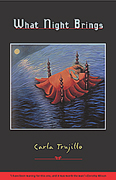
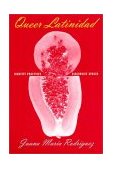


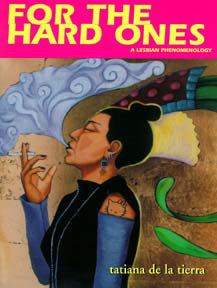
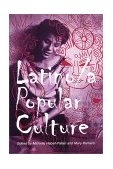


Please read all Notes and Disclaimers.
While this is by no means a complete bibliography of all Chicana Lesbian writers, it may serve as an introductory guide to fiction and drama by and about Chicana lesbians. I'm always looking for more to read, so if you come across something you love or hate by a Chicana or Latina lesbian writer, please email me
If my alphabetization seems eclectic, remember that I disregard introductory articles a, an, the, el, and la
In order to respect the copyrights of these authors and their
publishers, only brief excerpts are printed here.
Every effort has been made to provide full information about original
and reprint publication information, although reprints of a story
after appearing in a collected works anthology may be omitted.
[ A | B | C | D | E | F | G | H | I | J | K | L | M | N | O | P | Q | R | S | T |U |V |W | X | Y | Z ]
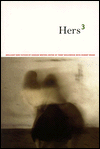

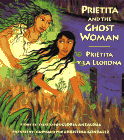
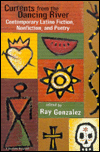

Alarcon, Norma, Ana Castillo, and Cherrie Moraga, eds. 1989. The Sexuality of Latinas [special issue of Third Woman]. Third Woman Vol. 4. Reprint Berkeley: Third Woman Press, 1993.
Alderete, Pat. "Fire" In Hers 3: Brilliant New Fiction by Lesbian Writers. Ed. Terry Wolverton. Boston: Faber and Faber, 1999. 147-151.
-----. Friends from the Other Side/ Amigos del Otro Lado. 1993.
-----. "Ghost Trap." New Chicana/Chicano Writing 1. Ed. Tatum. Tucson: University of Arizona Press, 1992. 40-42. Reprinted Currents From the Dancing River. Ed. Gonzalez. New York: Harcourt Brace, 1994. 116-118.
-----. "La historia de una marimacha." 1989.
-----. "Lifeline." Lesbian Love Stories Ed. Zahava. Freedom, Calif.: The Crossing Press, 1989
-----. "Ms. Right, My True Love, My Soul Mate." Sinister Wisdom, V 27 (1984?), 80-83. Lesbian Love Stories, Volume 2. Ed. Zahava. Freedom, Calif.: The Crossing Press, 1991. 184-188.
-----."El Paisano is a Bird of Good Omen." 1982.
-----. "People Should Not Die in June in South Texas." 1985.
-----. "La Prieta." (Collection of Short Fiction), In progress.
-----. Prietita and the Ghost Woman/ Prietita y la Llorona. San Francisco: Children's Book Press, 1995.
-----. "Puddles." New Chicana/Chicano Writing 1. Ed. Tatum. Tucson: University of Arizona Press, 1992. 43-45. Reprinted Currents From the Dancing River. Ed Gonzalez. New York: Harcourt Brace, 1994.118-120.
-----. "She Ate Horses." Lesbian Philosophies
and Cultures. Ed. Allen. Albany: NY: State University of New
York Press, 1990. 371-388.
[ A | B | C | D | E | F | G | H | I | J | K | L | M | N | O | P | Q | R | S | T |U |V |W | X | Y | Z ]
++ Brincando el Charco:
Portrait of A Puerto Rican. Dir. and screenplay by Frances
Negron-Muntaner. 55 minutes. On 35 mm and VHS. Distributed by
Women Make Movies, 1994.
[ A | B | C | D | E | F | G | H | I | J | K | L | M | N | O | P | Q | R | S | T |U |V |W | X | Y | Z ]
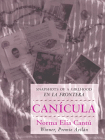




Cantu, Norma Elia. Canicula: Snapshots of a Girlhood en la Frontera. Albuquerque: University of New Mexico Press, 1997.
++ Carmelita Tropicana: Your Kunst is Your Waffen. Dir. Ela Troyano. Screenplay by Carmelita Tropicana [Alina Troyano] and Ela Troyano. Music by Fernando Rivas. ITVS Dist.. First Run/ Icarus Films, 1994.
Carrillo, Jo. "Maria Littlebear." In Lesbian Fiction: An Anthology, ed. Bulkin. Watertown, Mass.: Persephone Press, 1981.
Visit the official Ana
Castillo Website
See
also the Ana Castillo Papers at UCSB.
-----. Loverboys. New York: W.W. Norton, 1996.
-----. The Mixquiahuala Letters. Binghamton NY: Bilingual Press/Editorial Bilingue, 1986. Reprint New York: Random House, 1992.
-----. So Far From God. New York: W.W. Norton, 1993.
See also profile of Denise Chavez at Voices from the Gaps: Women of Color.
-----. "Corinne" in "Novenas Narrativas." Chicana creativity and criticism. Ed. María Herrera-Sobek, and Helena María Viramontes. Houston: Arte Público, 1988, 1998.
-----. The Last of the Menu Girls. Houston: Arte Publico, 1987.
-----. The Face of an Angel. New York: Warner Books, 1995.
See also profile of Sandra Cisneros at Voices from the Gaps: Women of Color
-----. The House on Mango Street. Houston: Arte Publico Press, 1984, 1989. Reprint New York: Random House/Vintage 1991.
-----. Woman hollering creek, and other stories. New York: Random House, 1991.
See also Jeanne Cordova's Web Page for a more extensive listing of nonfiction.
Kicking the Habit. Los Angeles: Multiple Dimensions,
1990.
[ A | B | C
| D | E | F
| G | H | I
| J | K | L
| M | N | O
| P | Q | R
| S | T |U
|V |W | X |
Y | Z ]

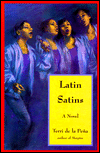


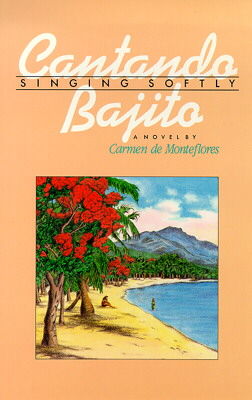
See also Author's Bio on Alyson Press Website
-----. "Beyond El Camino Real." Chicana Lesbians. Ed. Trujillo. Berkeley: Third Woman Press, 1991. 85-94.
-----. "Blue." Riding Desire. Ed. Corinne. Austin: Banned Books, 1990. 149-153.
-----. "Caballito al Diablo." In Out for Blood 2, ed. Brownworth. Third Side Press, 1996.
-----. "Desert Quartet." Lesbian Love Stories, Volume 2. Ed. Zahava. Freedom, Calif.: The Crossing Press, 1991. 154-161.
-----. Faults. Boston: Alyson Press, 1999.
-----. "Labrys." Word of Mouth. Ed. Zahava. Freedom, Calif.: The Crossing Press, 1990. 31.
-----. Latin Satins. Seattle: The Seal Press, 1994.
-----. Margins. Seattle: Seal Press, 1992.
-----. "Mariposa." Lesbian Bedtime Stories 2. Ed. Woodrow. Willits, Calif.: Tough Dove Books, 1990. 7-19.
-----. "La Maya." Intricate Passions. Ed. Corinne. Austin: Banned Books, 1989. 1-10.
-----. "Mujeres Morenas." Lesbian Love Stories, Volume 2. Ed. Zahava. Freedom, Calif.: The Crossing Press, 1991. 85-93.
-----. "Once a Friend." The One You Call Sister. Ed. Martinac. San Francisco: Cleis Press, 1989. 49-62.
-----. "Refugio." In Night Bites, ed. Brownworth. Seattle: Seal Press, 1996.
-----. "A Saturday in August." Finding Courage. Ed. Zahava. Freedom, Ca.: The Crossing Press, 1989. 141-150.
-----. Territories. Berkeley: Third Woman Press. In press. Winner of the 1992 Chicano/Latino Literary Contest (Short Story Collection).
-----. "Tortilleras." Lesbian Bedtime Stories. Ed. Woodrow. Willits, Calif.: Tough Dove Books, 1989. 83-92.
-----. "Tres Mujeres." Frontiers 11.1 (Summer 1990): 60-64.
de Monteflores, Carmen. Cantando Bajito/ Singing Softly. San Francisco: Aunt Lute, 1989.
del Fuego, Laura. Maravilla. 1989.
[ A | B | C
| D | E | F
| G | H | I
| J | K | L
| M | N | O
| P | Q | R
| S | T |U
|V |W | X |
Y | Z ]
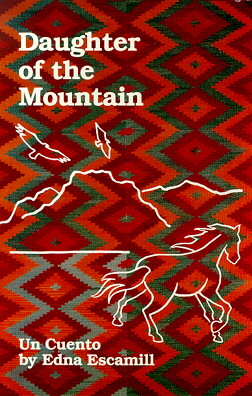
See also, Forte-Escamilla, Kleya.
-----. "Black Orchid." 1992.
-----. "Cajitas, an excerpt from the novel Daughter of the Mountain." Puerto del Sol 25.1-2 (Summer, 1990): 217-222.
-----. Daughter of the Mountain: un cuento. San Francisco: Aunt Lute Books, 1991.
-----. "The saga of pan birote y los tres chiles." Saguara Literary Journal 7 (1991): 41-47. Reprinted in Pieces of the Heart. Ed. Soto. San Francisco, Chronicle Books, 1993. Also reprinted in The Storyteller With Nike Airs and Other Barrio Stories.
Esquibel, Catrióna Rueda. "La Karla." Monologue in the series Amor Picante Pero Sabrosa. Produced by the Latina Lab of Su Teatro, at the Eulipons Theatre, Denver, Colorado, April 1992. Reprinted in Voces: A Journal of Latina Studies. Volume 2, Number 1. April 1998, 128-32
[ A | B | C | D | E | F | G | H | I | J | K | L | M | N | O | P | Q | R | S | T |U |V |W | X | Y | Z ]
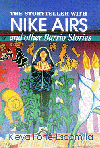
See also author profile at Voices from the Gaps.
-----.Mada: An Erotic Novel. Toronto: Sister Vision/Black Women and Women of Colour Press. 1993.
-----. The Storyteller With Nike Airs and Other Barrio Stories. San Francisco: Aunt Lute Foundation, 1994.
[ A | B | C | D | E | F | G | H | I | J | K | L | M | N | O | P | Q | R | S | T |U |V |W | X | Y | Z ]
-----. "A Baby for Adela." Politics of the Heart. Ed. Pollack and Vaughn. Ithaca, NY: Firebrand Books, 1988. 100-110 [The Gloria Stories, 2].
-----. "Dona Marciana Garcia." Cuentos. Ed. Gomez, Moraga and Romo-Carmona. New York: Kitchen Table/Women of Color Press, 1983. 7-15.
-----. "From The Gloria Stories." Conditions 7: 50-56.
-----. "A Matter of Fact." Riding Desire. Ed. Corinne. Austin: Banned Books, 1990. 36-43 [The Gloria Stories].
-----. "A Slow, Sweet Kind of Death." Intricate Passions. Ed. Corinne. Austin: Banned Books, 1989. 65-74.
Garcia, Angela. "Yo Yo" Beyond Definition: New Writing from Gay and Lesbian San Francisco. Ed. Blackman and Healey. San Francisco: Manic D Press, 1994.


See also Alicia Gaspar de Alba's Web Page.
-----."Cimarrona." Without Discovery. Ed. Gonzalez. Seattle: Broken Moon Press, 1992. 91-112.
-----. 1992. "Excerpts from the Sapphic diary of Sor Juana Ines de la Cruz." Frontiers, 12.3. 171-9. Reprinted 1995 in Tasting Life Twice: Lesbian Literary Fiction by New American Writers. Ed. Levy. New York: Avon Books.
-----. 1992. "Juana Ines." New Chicano/Chicano Writing 1. Ed. Tatum,. Tucson: University of Arizona. 1-15. Reprinted 1993 in Growing Up Chicana/o. Ed. Lopez. New York, Willam Morrow & Co.
-----. "Malinche's rights." Currents From the Dancing River. Ed. Gonzalez. New York: Harcourt Brace, 1994. 261-266. Translation of 1993 "Los derechos de la Malinche," The Mystery of Survival and Other Stories, 47-52.
-----. The Mystery of Survival and Other Stories. Tempe, Arizona: Bilingual Press/Editorial Bilingue, 1993.
-----. Sor Juana's Second Dream. Albuquerque: University of New Mexico Press, 1999.
Gomez, Alma, Cherrie Moraga, and Mariana Romo-Carmona, eds. Cuentos: Stories by Latinas. New York: Kitchen Table/Women of Color Press, 1983.
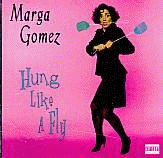
-----. Hung Like a Fly. Audio CD. Uproar Records, 1997.
-----. "A Line Around the Block." 1995. Excerpted in Contemporary plays by women of color, ed. Perkins and Uno. London; New York: Routledge, 1996.
-----. "Marga Gomez Is Pretty, Witty, and Gay." 1994. Excerpted in Contemporary plays by women of color, ed. Perkins and Uno. London; New York: Routledge, 1996.
-----. "Memory Tricks." 1993. Excerpted in Contemporary plays by women of color, ed. Perkins and Uno. London; New York: Routledge, 1996.
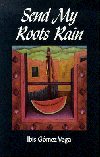
++ Gomez-Vega, Ibis. Send My Roots Rain. San Francisco: Aunt Lute Foundation, 1991.
[ A | B | C
| D | E | F
| G | H | I
| J | K | L
| M | N | O
| P | Q | R
| S | T |U
|V |W | X |
Y | Z ]
++ Hidalgo, Hilda. "El ser yo no es un lujo." Companeras. Ed. Ramos. New York: Latina Lesbian History Project, 1987. 72-76.
[ A | B | C
| D | E | F
| G | H | I
| J | K | L
| M | N | O
| P | Q | R
| S | T |U
|V |W | X |
Y | Z ]


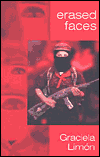
++Levi Calderón, Sara. The Two Women [Dos Mujeres] Gina Kaufer, Trans. San Francisco, Aunt Lute, 1995.
++ Libre de Marulanda, Rosita. "La Nina, La Puta, y La Santa Maria." esto no tiene nombre. 2.1 (otono 1992):16.
Limón, Graciela. The Day of the Moon. Houston: Arte Publico, 1999.
[ A | B | C
| D | E | F
| G | H | I
| J | K | L
| M | N | O
| P | Q | R
| S | T |U
|V |W | X |
Y | Z ]
Medina, Dolissa. "Ondas
on Her Tongue"
++ Mohr, Nicholasa. "An Awakening... Summer 1956." Revista Chicano-Riquena, V 11 no 3-4 (Fall 1983):107-112. Volume reprinted as Woman of Her Word: Hispanic Women Write. Ed. Vigil. Houston: Arte Publico, 1987.
Montes, Amelia M. de la Luz. "While Pilar Tobillo Sleeps." In Hers 3: Brilliant New Fiction by Lesbian Writers. Ed. Terry Wolverton with Robert Drake. New York: Faber and Faber, 1999. 9-21.
-----. "R is for Ricura" In Circa 2000: Lesbian Fiction at the Millenium. Ed. Terry Wolverton and Robert Drake. New York: Alyson, 2000.




See also Profiles of Cherrie Moraga at:
-----. Giving Up the Ghost. Staged reading At the Foot of the Mountain Theatre in Minneapolis, June 1984. Published Los Angeles: West End Press, 1986. Produced by the Front Room Theatre in Seattle, March 1987. Revised and produced at The Studio, Theatre Rhinoceros in San Francisco, February 1989. Revised and published in Heroes and Saints & Other Plays. Boston: South End Press, 1994. 1-35.
-----. Heart of the Earth: A Popol Vuh Story. In Puro Teatro: A Latina Anthology, Alberto Sandoval-Sánchez and Nancy Saporta Sternbach, eds. Tucson: University of Arizona Press, 2000. Also in The Hungry Woman, Albuquerque: West End Press, 2001.
-----. "Heroes and Saints." Staged reading Latino Lab of the Los Angeles Theatre Center, October 1989. Produced by BRAVA! for Women in the Arts at the Mission Cultural Center, San Francisco, April 1992. Published in Heroes and Saints & Other Plays. Boston: South End Press, 1994. 85-149.
-----. "The Hungry Woman: A Mexican Medea." In Out of the Fringe: Contemporary Latina/Latino Theatre and Performance. Caridad Svich and María Teresa Marrero, eds. New York: Theatre Communications Group, 2000. 289-363. Also in The Hungry Woman, Albuquerque: West End Press, 2001.
-----. "La Ofrenda." Out/Look #10 (Fall): 50-55. Reprinted in Chicana Lesbians, ed. Trujillo. Berkeley: Third Woman, 3-9; An Intimate Wilderness, ed. Barrington, Portland, Or.: Eighth Mountain Press, 1991; On Our Backs (n.d.); Women on Women 2, ed. Holoch and Nestle, New York: Plume, 1993.
-----. "Pesadilla." Cuentos: Stories by Latinas. Ed. Gomez, Moraga and Romo-Carmona. New York: Kitchen Table: Women of Color Press, 1983. 182-190.
-----. "The Shadow of a Man." Excerpt in Out/Look Summer 1989: 46-51. Produced by BRAVA! for Women in the Arts and the Eureka Theatre Company in San Francisco, November 1990. Published in Shattering the Myth, ed. Feeder. Houston: Arte Publico, 1992, 9-49; Revised and reprinted in Heroes and Saints & Other Plays. Boston: South End Press, 1994, 37-84.
-----. "Watsonville: Some Place Not Here." Dir. Amy Mueller. Produced by Brava! for Women in the Arts, Brava Theater Center, San Francisco, May 1996. In Plays from the South Coast Reportory: Hispanic Playwright's Project. Luis Alfaro, ed. New York: Broadway Play Publishin, 2000.
Morena, Naomi Littlebear. Survivors: A Lesbian Rock Opera. 1980. Excerpt reprinted as "Coming Out Queer and Brown" in For Lesbians Only: A Seperatist Anthology. London: Onlywomen Press, 1988. 345347.
[ A | B | C
| D | E | F
| G | H | I
| J | K | L
| M | N | O
| P | Q | R
| S | T |U
|V |W | X |
Y | Z ]
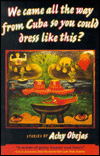
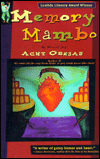

-----. "Argentina : back to Europe where it belongs." Nuestro Vol. 6, no. 8 (October, 1982): 51.
-----. Days of Awe. New York: Ballantine Books, 2001.
-----. "The escape." Bilingual Review Vol. 11, no. 2 (May-August, 1984): 44-48.
-----.Memory Mambo. San Francisco: Cleis Press, 1996.
-----. "Polaroids." Third Woman Vol. 3, no. 1-2 (1986): 49-54.
-----. We came all the way from Cuba so you could dress like this? Pittsburgh and San Francisco: Cleis Press, 1994.

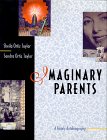
See also Sheila Ortiz Taylor Papers at UCSB
-----. "All Things Being Equal." Christopher Street (November 1981).
-----. "A Friend of the Family" Focus: A Journal for Lesbians. (September-October 1981).
-----. Coachella. Albuquerque: University of New Mexico Press, 1998.
-----. "Extranjera." (A novel of Arden Benbow), 2001. In production.
-----. Faultline. Tallahassee, Fla.: The Naiad Press, 1982.
-----. Imaginary Parents. Art by Sandra Ortiz Taylor. Albuquerque: University of New Mexico Press, 1996.
-----. Southbound. Tallahassee, Fla.: The Naiad Press, 1990.
-----. Spring Forward/Fall Back. Tallahassee, Fla.: The Naiad Press, 1985.
-----. "With Friends Like These." Lesbian Voices, (Fall 1981).
[ A | B | C
| D | E | F
| G | H | I
| J | K | L
| M | N | O
| P | Q | R
| S | T |U
|V |W | X |
Y | Z ]



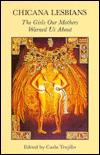
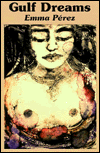
Palacios, Monica. "Describe Your Work" In Puro Teatro: A Latina Anthology. Alberto Sandoval-Sánchez and Nancy Saporta Sternbach, eds. Tucson: University of Arizona Press, 2000.
-----. "Greetings from a Queer Señorita." In Out of the Fringe: Contemporary Latina/Latino Theatre and Performance. Caridad Svich and María Teresa Marrero, eds. New York: Theatre Communications Group, 2000. 365-391.
-----. "La Llorona Loca: The Other Side." Lesbian Bedtime Stories 2. Ed. Woodrow. Willits, Calif.: Tough Dove Press, 1990. 174-7. Reprinted Chicana Lesbians, ed. Trujillo. Berkeley: Third Woman Press, 1991, 49-51.
-----. "Personality Fabulosa." OUT/LOOK 4 (2):1991. 32-37.
Pendleton Jiménez, Karleen. "The Lake at the End of the Wash" in Hers3: Brilliant New Fiction by Lesbian Writers. Ed. Terry Wolverton, and Robert Drake. New York: Faber and Faber, 1999. 177-181.
Perez, Emma. Gulf Dreams. Berkeley: Third Woman Press, 1996. Excerpt in Chicana Lesbians, ed. Trujillo, Berkeley: Third Woman Press, 1991, 96-108; reprinted in An Intimate Wilderness, ed. Barrington, Portland, Or.: Eighth Mountain Press, 1991
Portillo Trambley, Estela. Estela Portillo Trambley Papers -- Archives at UT.
-----."Day of the Swallows." El Grito, V 4 no 3 (Spring 1971): 4-47, and reprinted in Contemporary Chicano Theater, ed. Garza, Notre Dame, Ind.: Univ. of Notre Dame Press, 1976, 205-245; and in The Woman That I Am: A Woman of Color Anthology, New York: St. Martin's Press, 1994, 358-390.
-----. "Sor Juana" in Sor Juana and Other Plays. Ypsilanti, Mich.: Bilingual Press/Editorial Bilingue, 1983. Reprinted in Infinite Divisions, ed. Rebolledo and Rivero. Tucson: Univ. of Arizona, 1993, p. 233-255
[ A | B | C
| D | E | F
| G | H | I
| J | K | L
| M | N | O
| P | Q | R
| S | T |U
|V |W | X |
Y | Z ]
++ Ramos, Juanita [Diaz], ed. Companeras: Latina Lesbians (An Anthology). New York: Latina Lesbian History Project, 1987.
++ Rivera-Valdes, Sonia. "Las historias prohibidas de Marta Veneranda." Third Woman IV (1989): The Sexuality of Latinas. Third Woman Press: 1993. 90-98.
[ A | B | C
| D | E | F
| G | H | I
| J | K | L
| M | N | O
| P | Q | R
| S | T |U
|V |W | X |
Y | Z ]
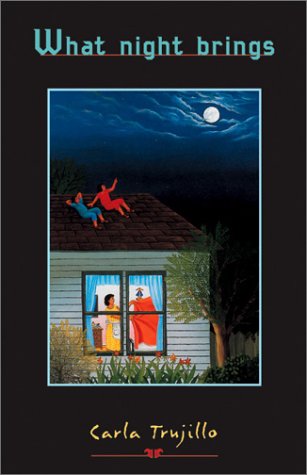
Trambley, Estela Portillo. See Portillo Trambley, Estela.
++Troyano, Alina, et al. I, Carmelita Tropicana: Performing Between Cultures. Boston: Bluestreak/Beacon, 2000.
++Troyano, Ela, dir. Carmelita Tropicana:Your Kunst is Your Waffen. Screenplay by Carmelita Tropicana [Alina Troyano] and Ela Troyano. Music by Fernando Rivas. ITVS Dist. First Run/ICARUS Films, 1994.
Trujillo, Carla. What Night Brings. Willamantic, CT: Curbstone Press. 2003.
Trujillo, Carla, ed. Chicana Lesbians: The Girls Our Mothers Warned Us About. Berkeley: Third Woman Press, 1991.
[ A | B | C
| D | E | F
| G | H | I
| J | K | L
| M | N | O
| P | Q | R
| S | T |U
|V |W | X |
Y | Z ]
Vigil, Evangelina, ed. Woman Of Her Word: Hispanic Women Write. (1983) Second edition Houston: Arte Publico Press, 1987.


-----. "Golden glass." Bilingual Review Vol. 8, no. 2-3 (May-December, 1981), 70-72. Reprinted in Hispanics in the United States : an anthology of creative literature, vol. 2, ed. Jimenez and Keller. Ypsilanti, MI: Bilingual Review/Editorial Bilingue, 1982, 70-72.; and Growing Up Latino, ed. Augenbraum and Stavans. Boston: Houghton Mifflin, 1993, 259-263.
-----. "Her Choice." Infinite Divisions, ed. Rebolledo and Rivero. Tucson: University of Arizona, 1993, 337-340.
-----. "Maya [from Dream]". Currents from the Dancing River, ed. Tatum. New York: Harcourt Brace, 1994, 275-291.
-----. Naked Ladies Tempe, Ariz: Bilingual Press, 1994.
-----. "People of the Dog." Mirrors beneath the Earth, ed. Gonzalez. Willimantic, CT: Curbstone Press, 1992, 55-58.
-----. "The Ripening." Bilingual Review Vol. 11, no. 2 (May-August, 1984), 78-88.
-----. The Ultraviolet Sky. Tempe, Ariz.: Bilingual Press/Editorial Bilingue, 1988. Reprint New York: Anchor Books, 1993.
-----. Weeping Woman/ La Llorona and Other Stories. Tempe Ariz: Bilingual Press, 1994.
Viramontes, Helena Maria. "Miss Clairol". The Americas Review Vol. 15, no. 3-4 (Fall-Winter, 1987), p. 101-105. Reprinted Vol. 20, no. 3-4 (Fall-Winter, 1992), p. 9-13, and in The Woman That I Am. New York: St. Martin's Press, 1994, p. 284-287.
-----. The Moths and Other Stories. Houston: Arte Publico, 1985.
[ A | B | C
| D | E | F
| G | H | I
| J | K | L
| M | N | O
| P | Q | R
| S | T |U
|V |W | X |
Y | Z ]
++ Yo, la peor de todas. Dir. Maria Luisa Bemberg. Screenplay by Ma. Luisa Bemberg and Antonio Larreta. Adapted from Las trampas de fe by Octavio Paz. 105 minutes. Argentina: GEA Cinematografica. Dist.. First Run/ Icarus Films, 1990.
[ A | B | C
| D | E | F
| G | H | I
| J | K | L
| M | N | O
| P | Q | R
| S | T |U
|V |W | X |
Y | Z ]
Main character is Andrea de la Cruz, the eldest daughter of a land-owning tejano family. The setting is the occasion of her wedding to Zenobio Rios. Other characters: Andrea's mother (unnamed), Dona Ines (Zenobio's mother), Tio Efrain, Belinda Lopez, Jose Manuel Flores. When the marimacha is betrothed to the maricon, with whom will she dance at the wedding?
The story emphasizes Andrea's connections (erotic and otherwise) with nature.
Originally published in Conditions 8 (Spring 1982):
28-47. Reprinted in Cuentos: Stories by Latinas (153-175),
1983. An excerpt from a novel in progress.
Back to Top
Originally published in the anthology My story's on! : ordinary
women, extraordinary lives. Ed. Paula Ross. Berkeley: Common
Differences Press, 1985. Reprinted in My father's daughter
: stories by women. Ed. Irene Zahava. Freedom, Ca.: Crossing
Press, 1990, and Growing up Latino. Ed. Augenbraum and
Stavans. Boston: Houghton Mifflin Company, 1993. 280-287. Main
character: Prietita.
Back to Top
In Spanish.
Told in first person by the marimacha in question, tells of the courtship of her novia, the father's prohibition, and the lovers' elopement. Lots of bravado and drama: the story ends with a corrido.
Rebolledo discusses the story as:
"Anzaldua's creation of a lesbian Chicana mythos.... In 'La historia,' Anzaldua enters into the timeless, mythic world of archetypes when she creates the romance of two women in some mythic/historic time in Mexico..... The narration is not only a romance, after the tragic romances of Spain, it is also a corrido of life and vengeance. Written in Spanish, Anzaldua uses colloquial language to situate the tale in a mythic time. That the women win is certainly an event, since women hardly ever had the upper hand in these tales" (201)
Originally published in Third Woman 4 (1989), which was reissued by Third Woman Press as The Sexuality of Latinas, (1993): 64-68.
Rebolledo, Tey Diana. Women singing in the snow : a cultural
analysis of Chicana literature. Tucson: University of Arizona
Press, 1995.
Back to Top
Friends
from the Other Side.
Pictures by Consuelo Mendez
In Spanish and English
Anzaldua's first children's book. Main characters, Prietita
and Joaquin, other characters: the curandera, Joaquin's mother,
and Prietita's cousin Tete.
Prietita sees her friends and cousin harassing another boy because
he is poor and he and his mother are indocumentados. Shows discrimination
within Chicano communities as well as community resistance to
la migra.
Mendez's illustrations provide many little glimpses into the lives of characters, through the decorations and icons in their homes.
Having crossed the Rio Grande into Texas with his mother in
search of a new life, Joaquin receives help and friendship from
Prietita, a brave young Mexican American girl.
Praised by School Library Journal as "an important
book touching on a timely and sensitive issue."
San Francisco: Children's Book Press, 1993. In paperback and
hardcover.
Back to Top
Pictures by Christina Gonzalez
In Spanish and English
Continues the adventures of Prietita. Other characters: little sister Miranda, the curandera Dona Lola, Prietita's cousin Tete.
Prietita embarks on a dangerous journey, entering the King Ranch to find the herb ruda to treat her mother's illness. She asks for help from the creatures she meets and is finally guided by La Llorona.
In the author's notes, Anzaldua adds "my mamagrande used to tell me scary stories about la Llorona.... All the children were afraid of la Llorona -- I was afraid too, but even at that age I wondered if there was another side to her. As I grew older and studied the roots of my Chicana/Mexicana culture, I discovered that there really was another side to la Llorona, a powerful positive side, a side that represents the Indian part and the female part of us" (32).
Gonzalez's illustrations use vibrant colors to depict the life and drama of the Texas landscape at night.
Prietita, a young Mexican American girl, becomes lost in her search for an herb to cure her mother and is aided by the legendary ghost woman.
San Francisco: Children's Book Press, 1996. In hardcover.
Back to Top
Film bites from the Fifth Annual Women of Color Film and Video Festival
Brincando el Charco: Portrait of a Puerto Rican
Frances Negron-Muntaner
(1994), 54:00
Sophisticated and refreshing, Brincando el Charco contemplates
the notion of identity through the experiences of a Puerto Rican
woman living in the US. A mixture of fiction, archival footage,
processed interviews, and soap opera drama, this film tells the
story of Claudia Marmon, a light skinned lesbian photographer/videographer
attempting to construct a sense of community in the US. Her struggles
with issues of family, sexuality, creativity, identity, and racism
are interwoven with the stories of her interview subjects. Brincando
el Charco becomes a meditation on the shifting differences of
class, race, and sexuality as Marmon confronts both her privilege
and her oppression.
Distributor's synopsis:
Carmelita Tropicana portrays an event-filled day in the life of its eponymous heroine, Latina performance artist Carmelita Tropicana. La Tropicana's experiences, as a single woman and lesbian supporting herself as a building "super" on New York's Lower East Side, are embellished with humorous monologues and a novela-style melodrama, with fantasy musical production numbers.
Featured at the Berlin Film Festival, where it took a Teddy Bear for best short film, Carmelita Tropicana confounds every cliche and has fun with every Latina media stereotype, from hot torch singer to gang girl to woman-in-prison. Outrageous and colorful, It was named a "top ten" by Deneuve magazine. --ITVS
Fans of Denise Chavez who are familiar with her award-winning short story collection The Last of the Menu Girls and her plays, such as Novenas Narrativas, will be pleased with her new novel The Face of an Angel. Like her earlier works, Face of an Angel focuses on the lives of southern New Mexican women.
The main narrator is Soveida Dosamantes, whom we follow from girlhood to womanhood, yet the book itself includes a series of conversations, mujer a mujer. Chavez's playwrighting skill comes out, as in Chapter 5 "Y tu, ?que?" in which the words of a husband and wife appear side by side, each telling their own story, without really speaking to one another. Chavez weaves together her cuentos -- those that everyone has heard. . . those that everyone knows but no one voices. Her characters are alive, with all their prejudices and blind spots. The promotional blurbs on the back cover call the novel uplifting, entertaining, a family saga, and "delicious as a hot New Mexican meal." What they don't mention is that the novel is profoundly disturbing, perhaps because Chavez re-works the "family saga" to show the bitterness, the disappointment, the ignored wounds that fester and kill. Chavez shows some of the ways that girls learn about sexuality -- which in this context means heterosexuality -- from mothers, from dichos, from men and boys, and from life. Face of an Angel is hard to put down, and pushes the reader to look backward and forward at the women in her (own) life.
[Published in CLRC Research and News Update No. 8 (Fall/Winter
1997): 15.] Copyright 1997 Catriona Rueda Esquibel
Watch for the Lesbian Nun in Chapter 59!
Back to Top
Recovering from a car crash that left her lover dead and put
her in a coma, Veronica Melendez isn't looking for
another lover but finds two. Until the accident, life had been
simple. She was a dutiful daughter, college
graduate student, and secret lover of her childhood friend, Joanna.
Beautiful Sienna and wild Rene each help
Veronica realize that she wants to ``come out'' both to her family
and in her short story writing. This lusty
story of the awakening of a 22-year-old Chicana lesbian uses Spanish
dialog intermixed with English to
effectively show both Veronica and the reader the value of bilingualism
without making it a necessity. The
process is all in this story. As the young woman regains her strength
and learns new skills, she realizes that
with kindness but toughness she can face her family and the rest
of the world openly.--Regan Robinson,
``Librarians Collection Letter,'' Keller, Wash.
Terri de la Pena's Margins creates a lesbiana character
that overcomes the obstacles of a tragic car accident, defining
her artistic identity, girlfriend dilemmas and coming out woes
as she discovers her Chicana roots... --Rose Cosme
Cosme takes de la Pena to task for the benign racism of the
Melendez family and the way in which it is accepted without question
by protagonist Veronica. Scholar Ellie Hernandez contests Cosme's
in her rebuttal "A Blind-Sided View of Margins.
Cosme, Rose. "One Chicana lesbiana's view of Margins" esto no tiene nombre 2.2 (invierno 1993): 7.
Daly, Mary Ann. "A Study in Character: Terri de la Pena's Latina Lesbians Light Up the Page." Review of Margins, by Terri de la Pena. Lambda Book Report 3 (5):15. 1992.
Hernández, Ellie. "A Blind Sided View of Margins." esto no tiene nombre 2.3 (1993): 7.
Regan, Robinson. Review of Margins, by Terri de la Pena. Library Journal 117 (5):124. 1992.
Review of Margins, by Terri de la Pena. Publishers Weekly 239 (15):66. 1992.
Wolverton, Terry. "Hot Reads for a Summer Night: The Books
of Summer." Review of Margins, by Terri de la Pena.
Advocate 604:40. 1992
Back to Top
Review of Latin Satins, by Terri de la Pena. conMocion 2:13. 1996.
Corona gives a mixed review:
"Throughout the novel, Terri de la Pena touches on some very real issues, including the inescapable exposure to machismo and prejudice [racism], the fear of losing one's job due to homophobia -- especially when the work involves children -- and the constant recreation of culture..."
[The song lyrics] "are crucial to the novel and de la Pena uses them strategically. They hold, in a concise manner, the frustrations and thoughts that might otherwise sound like monologues or lectures."
"Disappointingly, de la Pena merely surfaces some topics such as those of AIDS, bisexuality and desire, leaving one in want of further exploration. However, more than one lesbiana will find parts of herself reflected in the believable and inclusive world that de la Pena creates."
de la Pena's "Second Thoughts about Sweaty Pages," in which she discusses some of her second
"Am I the only one who thinks there is more than enough emphasis on sex in our writings? Am I the only one who is embarrassed by the covers of some of our books, newspapers and magazines?" (36)
This essay is in the minority and somewhat out of place in this particular issue, the erotica issue of conMocion, chock full of sex-positive articles, essays, reviews, photographs, drawings, poetry and cuentos.
Review of Latin Satins, by Terri de la Pena. Library Journal 119 (16):112.
Review of Latin Satins, by Terri de la Pena. Lambda Book Report 4 (10):21. 1995.
Ortega writes a very positive, sassy review, and comparing the novel throughout to chips and salsa, tasty and satisfying. She paints Latin Satins in the best possible light, overlooking the shortcomings pointed out by Corona.
Review of Latin Satins, by Terri de la Pena.
241 (31):75. 1994.
This unsigned book review takes an unnecessarily harsh view of the novel:
"Racism, classism, sexism, economic politics and a beautiful bird watching Chicana lover [sic] should provide ample material to give a novel life and meaning, but this book is as flat as its pages, as blank as their margins, as formless as pulp."
The concluding sentence is the most telling, since it charges de la Pena with "Sledgehammer anti-white rhetoric." Of all the reviewer's vitriolic comments, this is the most difficult to give credence to. Publisher's Weekly's 1992 review of Margins was much more concise and less reactionary.
Review of Latin Satins, by Terri de la Pena. Lesbian Review of Books 2 (1):4. 1995.
Perez' review is mainly positive, drawing some interesting parallels between the inimitable Selena and de la Pena's characters, discussing Chic Lozano as a femme fatale [femme?], the role of de la Pena's novels in Chicana lesbian representation, and giving a most nuanced reading of the role of music.
Perez draws attention to the way the characters give the obligatory
lesbian-feminist shudder regarding s/m and other "bad girl"
sexuality: "If de la Pena is demonstrating for us how such
a personality would react against the expression of S/M politics
in the community, then she succeeds." In spite of these "personally
charged controversies and... minor contention[s]" and the
vain wish that the novel had been set in Texas, with one of the
Satins playing the accordion, Perez applauds this "enjoyable
fantasy about four Chicana lesbians living, singing, and loving
together.
Back to Top
Teri de la Pena weaves a luxurious tapestry in the telling
of the story of five Latina women, their struggles, and
their triumphs. Shifting perspectives between Toni Dorado; her
estranged lover Pat Ramos; Toni's mother, Adela;
her sister Sylvia; and Sylvia's daughter Gabriela, we experience
their old resentments, and their fierce complicated
love for each other. "Faults is a richly colorful and unforgettable
tribute to the enduring strength of family."
Feminist writer de la Pena (Margins) attempts, with
mixed results, to give voice to five different Latina women
linked by blood or love, each struggling with her own emotional
baggage. After 18 unhappy months living with an
old college girlfriend in the woods of the Pacific Northwest,
where she retreated after losing her job as a librarian,
40-year-old Toni Dorado is returning to Los Angeles. Her mother,
Adela, and college-aged niece, Gabriela, are
eager to welcome Toni home, but Toni's estranged sister, Sylvia,
is less enthusiastic, as is activist Pat Ramos,
Toni's abandoned ex. These women--who speak and think in varying
degrees of convincing Spanglish--narrate by
turns, but their credibility suffers when they rattle off sound
bites about spousal abuse, underrepresentation of
minorities in the media, or spout stock phrases from self-help
books. As one-dimensional as the narrators can be,
the supporting cast is even worse: Sylvia's wife-beating husband,
Zalo, is one muy macho Chicano, smashing
every object in sight while growling threats and insults. Gabriela
is understandably eager to get her mom away
from her evil stepdad, and Toni campaigns against Zalo, too; Adela,
who accepts Toni's lesbianism in spite of
being a devout Catholic, balks at breaking up Sylvia's marriage.
Meanwhile, Toni is trying to get back together
with Pat, who is justifiably ticked off at having been dumped
the year before for Toni's Anglo old flame. After
the Northridge earthquake, during which bad people are conveniently
punished, most conflicts are neatly
resolved. One wishes that de la Pena had gone beyond stock situations
and characters and really probed the heart
of her community. (Sept.) Copyright 1999 Cahners Business Information.
Originally published in Sinister Wisdom 47 (Summer/Fall 1992) 78-81.
This short story by Edna Escamill attempts to portray adolescent desire. Chula haunts the alley behind the lesbian bar after school, still wearing her Catholic school uniform, watching for the butch in the black Impala, "the woman who dressed like a man." The issue of consent is heavily weighted.
Escamill's in-text translation of Spanish words and phrases
can prove frustrating or distracting for bilingual readers: "Te
agarra una de esas, y ningun hombre te quiere de mujer. If one
of those women touches you, no man will want you."
Reprinted in The Storyteller With
Nike Airs and Other Barrio Stories.
Back to Top
The cover of this book features a detail from Yreina Cervantez's "La Ofrenda" mural, "on Toluca Street under the 1st Street Bridge (near the intersection of 2nd and Glendale) in Los Angeles" (2nd copyright page).
~ originally published 1992. # originally published 1991 & reprinted Currents From the Dancing River. Ed. Gonzalez. New York: Harcourt Brace, 1994. 137-144. ^^ originally published 1993
de la Pena, Terri. "The Best Sleep of All." Rev.
of The Storyteller with Nike Airs and Other Stories, by
Kleya Forte-Escamilla. Lambda Book Report 4.10 (May-June,
1995): 22.
Back to Top
Kleya Forte-Escamilla's novel, Mada (Sister Vision Press) se
trata de un love story between two women: "Raquel's obsession
with the beautiful and mysterious Mada draws her into a world
of crime, intrigue and betrayal that threatens to destroy them
both." la escritora won Astraea's writing award in '93.
[reprinted from the telarana
web page, Copyright 1997 tatiana de la tierra]
Back to Top
The first of Gamez's continuing Gloria stories, introduces us to Gloria, that irrepressible butch, and Rocky, our celibate "schoolgirl" narrator. This story was originally published in 1981, and has been widely reprinted:
This bold novel unravels the mystery and complexity fo the woman Carlos Fuentes calls "the first great latin American poet." Sor Juana Ines de la Cruz (1648-1695), poet, playwright, rhetorician, and musician, is often equted with Sappho, the lesbian oet whom Plato baptized the "Tenth Muse." The Mexican nun has fascinated readers around the world for centuries as scholars have attempted to understand her brilliance, her feminism, the affairs of her heart, her decision to enter a convent at the beginning of her intellectual career.
Juana Ramirez de Asbaje, an illegitimate criolla, is sixteen when whord of her self-taught erudition travels to the palace in Mexico City and she becomes an attendant to Dona Leonor Carreto, Marques de Mancera. Wanting only to study, confused by her love for la Marquesa, and loathe to marry, in five years Juana becomes Sor Juana Ines de la Cruz in the Convent of Santa Paula of the Order of San Jeronimo. THere, her quill becomes her salvation and damnation as her notoriety mounts with each new artisitic commission. Popular with cour and clergy, she recieves a stream of guests at the convent, among them la Condesa de Paredes , who becomes Sor Juana's intimate friend. More than two decades later, after brilliantly defending her right to think, teach, and write, Sor Juana appears before the inquisition and abruptly withdraws from the spotlight.
Mixing fiction with Sor Juana's own words and drawing on the most recent Sor Juana scholarship, Alicia Gaspar de Alba creates the most full-bodied portrait to date of Mexico's Tenth Muse. This remarkable novel about a remarkable woman will enlighten a new generation of readers and stoke the interest of devotees who already are captured by the inspiritng Sor Juana Ines de la Cruz.
In her first novel, poet and Chicano studies scholar Gaspar
de Alba brings to life Sor Juana Ines de la Cruz, a
prolific, brilliant, and complex author and nun of 17th-century
Mexico. Although Sor Juana left behind several
volumes of published writings, the more personal details of her
life remain sketchy. Gaspar de Alba has artfully
combined excerpts from the writings with explicit, fictionalized
journal entries to create a vibrant, if sometimes
anachronistic, account of a complex life. Long adored in Mexico,
Sor Juana has only recently become popular in
the United States. She is often considered North America's first
lesbian feminist writer, and Gaspar de Alba
clearly shares this view. Eminently readable, this book is recommended
for larger public libraries; readers desiring
a more conservative biography might prefer Nobel laureate Octavio
Paz's Sor Juana; or, The Traps of Faith (LJ
9/1/88).--Mary Margaret Benson, Linfield Coll. Lib., McMinnville,
OR Copyright 1999 Cahners Business
Information.
The story of Mexico's Sor Juana In s de la Cruz (1648-1695)--one
of the great thinkers and poets of the 17th
century and an iconic figure in women's history--has been much
told in academic circles. In her intelligent,
thoroughly researched novel, Gaspar de Alba goes beyond established
fact and paints a fictionalized, sometimes
controversial portrait. In 17th-century Mexico, women either married
or became nuns, but they were not
educated, nor were they thought to have souls. Sor Juana, a prodigy
of erudition from an early age, chose the veil,
not because she felt a calling, but because marriage was even
more unthinkable. Defying the Inquisition and the
profoundly patriarchal world she lived in, she wrote and read
prolifically and publicly until she was threatened
into silence by the Church hierarchy. She then renounced her "worldly"
ways and completely surrendered to
religion, ceasing all writing and communication with the outside
world. As Gaspar de Alba tells it, Sor Juana was
not only a woman who questioned a patriarchal and superstitious
society, but also a lesbian. She makes a
convincing case by juxtaposing the nun's own poetry with actual
events and fictional journal entries.
Commendably, Sor Juana's flaws are not glossed over; she is portrayed
as vain, prejudiced and difficult. This
work of fine scholarship and vision should increase awareness
of a compelling historical figure. (Aug.) Copyright
1999 Cahners Business Information.
These three stories, all first published in 1992, are related tales about the seventeenth century nun, poet, philosopher Sor Juana Ines de la Cruz. "Excerpts from the Sapphic diary" and "Juana Ines" are excerpted from Gaspar de Alba's first novel Sor Juana's Second Dream. "Athena Among Calla Lilies" and "The Tenth Muse" were earlier titles for the novel.
"Juana Ines" takes place during Juana's youth. It is set on the day of her examination by the most learned gentlemen in Mexico City, in 1667, although it reflects back to "the first time she had lid eyes on Leonor Carreto, Marquesa de Mancera." The story begins with Juana confessing her desire for the Marquesa, a confession she knows she will never make to any priest, and ends with her decision to take the veil.
"Excerpts from the Sapphic diary," epistolary in
form, recounts Juana's initial feelings and growing relationship
with "our new Vicereine,. . . Maria Luisa de Manrique, Condesa
de Paredes" and covers the period from January 1681 to November
1682. The first entry is adressed to the late Condesa, and shows
Juana's position within the convent, where the Mother Superior
orders all the inhabitants out in the the garden, to pray for
their salvation at the sight of a comet in the sky, surely a sign
from God. Juana, recognizing it as a natural phenomenon, is disregarded
and must kneel down and pray with the others. The emphasis of
this entry is on Juana's mourning of "Laura" the marquesa,
at the same time that she has fallen in love again. The later
entries show la condesa's influence over Juana, and rebellion
against her lady's caprice.
In "Cimarrona" Gaspar de Alba shifts her focus to Concepcion, the mestiza novice who acted as Sor Juana's assistant in the convent. Sor Juana, although identifiable from the earlier stories and by her writings, is called only "Madre" in this story. Concepcion runs away from the convent, freeing Alendula, daughter of a free Black woman and a cimarron. Imprisoned in a cell in the convent, Alendula tells Concepcion "stories of the village of San Lorenzo where free Negroes ruled like kings. She spoke of ceremonies that startled Concepcion. Of moon mothers and river goddesses and altars piled with coconuts, oranges and bones." Alas their escape is ill-fated, and they end up on a Dutch slave ship, where Concepcion's literacy earns her un precio fijo.
"Cimarrona" was originally published in Without Discovery:
A Native Response to Columbus, edited by Ray Gonzalez. It was
reprinted 1994 In Other Words: Literature by Latinas of the
United States. edited by Roberta Fernandez. The copyright
page from In Other Words incorrectly identifies the original
publication as Mystery of Survival and Other Stories (1993).
Roberta Fernandez reports that "Cimarrona" is "from
another working manuscript entitled Thankful Sea Graves: A
Chicana Gothic (In Other Words, introduction to "Cimarrona,"
401).
For other lesbian representations of Sor Juana Ines de la Cruz,
see Maria Luisa Bemberg's 1990 film, Yo, la
peor de todas. See also Estela Portillo Trambley's Sor
Juana which attempts to recoup Sor Juana as heterosexual,
and Gaspar de Alba's article "The Politics of Location
of the Tenth Muse of America: Interview with Sor Juana Ines de
la Cruz," in Carla Trujillo's Living Chicana Theory.
Back to Top
This 1993 collection includes eleven stories, four of which have been previously published. The last four stories are written/recovered by the character Xochitl/ X. Mary Espinosa of "The Pinata Dream."
Candelaria's introduction takes an ethnopoetic approach and
uses the metaphor of the pinata. Although she frequently names
lesbianism as significant to Gaspar de Alba's work she does not
describe this significance
de la Pena, Terri. "Send My Roots Rain" Lambda
Book Report 3.4 (May-June 1992): 34.
Back to Top
Actually, this isn't a short story at all: it's an essay, and so doesn't really belong in this bibliography. But there was absolutely no way I could pass on a title like this.
In Spanish.
Rosita Libre de Marulanda discusses the female archetypes handed
down by the colonizers even as "hay quienes celebran los
quinientos anos de opresion, y de sifilizacion."
Back to Top
University of New Mexico Press Spring 1998 book catalog:
It's 1983 in Coachella Valley and Yolanda Ramirez, a lowly phlebotomist at the Palm Springs hospital, has a hunch. Gay men, hemophiliacs, and women scarred by cosmetic surgery are dying. Safe blood, like the water keeping this desert green, is a lie.
In the nearby trailer, Isabel Ochoa Dreyfus disappears into a new identity: Marina Lomas. Somewhere in Iowa her businessman husband sits in the dark, staring at his drink, promising never to hit her again, if only he can track her down.
Despite herself, Marina finds companionship at Mac and Gil's annual Casa Diva fashion show. As glamorous men stride up and down a poolside runway, Yo awakens Marina's sleeping desire.
Elsewhere in Coachella, Yo's father Crescencio, a gardener, soothes Eliana Townsend, his secret love, by coaxing life from the earth outside her window. She is dying, most likely from AIDS, but no one will tell her the truth. And through it all Crescencio's sister, Tia Josie, keeps the family steady with wisdom from the "Rockford Files" and her dead Cahuilla husband.
Truths surge to the surface in this community of false fronts and deep roots as readers are whisked toward the deafening conclusion of "Coachella" - the latest from one of Chicano literature's finest writers.
Sheila Ortiz Taylor's books include "Imaginary Parents" (UNM Press) and "Faultline".
de la Pena, Terri. "Island People." Rev. of We
came all the way from Cuba so you could dress like this? by
Achy Obejas. Lambda Book Report 4.7 (Nov-Dec 1994):24-5.
Back to Top
Achy Obejas publico su segundo libro, Memory Mambo (Cleis,
1996), una novela con una twenty-four year old lesbiana cubana
protagonista, Juani. she plays with the facts and fantasias of
memory, with relaciones entre mujeres y entre familia, with politically-correct
cosas, and with the invention of duct tape. todo esto happens
en un multi-cultural vecindario en Chicago, con un laundromat
churning in the background. once again, la portada de la novela
is graced by una pintura de la artista cubana Nereyda Garcia-Ferraz.
[reprinted from the telarana
web page, Copyright 1997 tatiana de la tierra]
de la Pena, Terri. Review of Memory Mambo, by Achy Obejas. Sojourner 22.6.
Tirica, Estelle. Review of Memory Mambo by Achy Obejas.
Letras Femeninas, 23 (1997).
Back to Top
Emma Perez's first novel Gulf Dreams is a challenging look at women, race and desire in a small Texas town. While the racism is blatant, the lives of Chicanas and Chicanos are also structured by sexism, heterosexism and sexual abuse. Perez traces the life of one woman, a girl who falls in love with another girl. The narrator refuses the path laid out for female friendships -- comadres who will see one another through "adolescence, marriage, menopause, death, and even divorce," -- saying instead "I had not come for that. I had come for her kiss." Ironically, the unnamed (lesbian) narrator learns sex from her (heterosexual? bisexual? otherwise queer?) girlfriend, as the latter recounts what her boyfriend does for her.
The novel is no coming-out story, lesbian affirmation, or simple erotica, nor is it a straight-forward narrative. Gulf Dreams leads the reader on a haunted path of tangled desires and memories. Perez's writing style is sensually evocative, bringing the reader not mere images but sensations of smell, touch taste, and pain.
Those familiar with Perez's critical writings will see echoes of past themes here, particularly in the rape trial, where racism is used as a rationalization or a diversion for male violence against women. Much more than a theoretical inquiry, Gulf Dreams is a complex and compelling novel.
[Published in CLRC Research and News Update No. 8 (Fall/Winter 1997): 15.] Copyright 1997 Catriona Rueda Esquibel
de Lauretis, Teresa. "Closing the Gulf Between Us." Lesbian Review of Books II.4 (Summer 1996): 4.
de la Pena, Terri. Review of Gulf Dreams, by Emma Perez. Sojourner 22.3.
de la tierra, tatiana:
Emma Perez' primera novela, Gulf Dreams (Berkeley: Third
Woman, 1996) es un historia written in a unique style, in past
and present tense, in a diary & dream form. se cuenta a traves
de los ojos de una Chicana who lusts for a small girl/young woman
who becomes a part of her imagined and real world. la autora,
who is an Assistant Prof of Historia at U. of Texas at El Paso,
visito a las lesbianas latinas en San Antonio last spring, where
she read from her novela and attended a recepcion in her honor.
en la portada de su libro hay una monotype pintura, "La Mestiza,"
by la artista venezolana Beatriz Pestana. (nota: la portada es
preciosa, evocativa, dreamy, perfect for el contenido.) her latest
proyecto is the completion of her libro, Sexing the Colonial
Imaginary: Chicana Feminist History, Theory & Consciousness,
probablemente to be publicado by Indiana University Press.
[reprinted from the telarana
web page, Copyright 1997 tatiana de la tierra]
Back to Top
According to Roberta Fernandez, "'The Day of the Swallows' first appeared in a single issue of El Grito, [4:3, 1971] then was incorporated into the second edition (1972) of El espejo, the first anthology of contemporary Chicano literature." Fernandez discusses Portillo Trambley at length and her significance for the development of Chicana literature. She points out the way in which Portillo Trambley has been overlooked and trivialized by Chicana/o scholarship.
Janice Dewey concurs with Fernandez regarding the first publication. She reads "Day of the Swallows" as being in the tradition of Federico Garcia Lorca, in particular La Casa de Bernarda Alba (1936). As a lesbian, Dewey voices her initial unease with how Portillo Trambley chose her subject matter:
"The plot is about lesbians; I knew nothing about them, but I was going to sell it. Well, it got published, it appeared in four anthologies, I get invited to talk about it, it gets analyzed to death, and it's a play I wrote in a very short time and for a terrible reason. I was just being mercenary." (Portillo Trambley 170, quoted in Dewey 40)
While Dewey admires Portillo Trambley's subversion she describes the latter as "creat[ing] theater of tragedy around a central character who integrates both a culture she admittedly knows nothing about with one she knows intimately. In the end, both lesbians and Chicanos live marginal and often repressed lives..." (41) Dewey's distinction between "lesbians" and "Chicanos" and her articulation of them as two "cultures" ultimately minimizes the significance Portillo Trambley's representation of a Chicana lesbiana, marginalized, sensationalized and tragic, to be sure, but also certainly also highly visible figure in Chicana/o representation who is both Chicana and lesbian.
In her review of Portillo Trambley's novel Trini (1986), Cherrie Moraga gives the first date of publication for "Day of the Swallows" as 1969. Moraga discusses the impact "Day of the Swallows," as representing the "taboo subject of Mexican female desire" as well as setting the stage for the development of Chicana lesbian literature.
"The Day of the Swallows" is reprinted in Contemporary Chicano Theater. Ed. Garza. Notre Dame, IN: University of Notre Dame Press, 1976, and, more recently, in the second edition of
Dewey, Janice. "Dona Josefa: Bloodpulse of Transition and Change." Breaking Boundaries. Ed. Asuncion Horno-Delgado, et al. Amherst: University of Massachusetts Press, 1989. 39-47.
Fernandez, Roberta. "Abriendo caminos in the brotherland: Chicana writers respond to the ideology of literary nationalism." Frontiers 14.2 (1994): 23-51.
Moraga, Cherrie. "The Obedient Daughter." Third Woman IV (1989) /The Sexuality of Latinas. Third Woman Press: 1993.157-162.
Portillo Trambley, Estela. Interview from Chicano Authors:
Inquiry by Interview, Bruce-Novoa. Austin: University of Texas
Press, 1980.
Back to Top
Unlike the works of Alicia Gaspar de Alba and Maria Luisa Bemberg, Portillo Trambley's play provides a decidedly heterosexual reading of the 17th-century literary figure, and emphasizes her relationship with her confessor, Padre Antonio Nunez de Miranda, as the most influential of her life.
A young Juana precipitously chooses to enter the convent because (as an illegitimate child) she is an unsuitable bride for her highborn lover, whose peninsular fiancee has arrived to claim him. She weeps inconsolably in Father Antonio's arms:
FATHER: Lady Laura loves you dearly. Everyone in this palace
is fond of you, proud of you...
JUANA: Oh, Father, how can that give meaning to my life? (156)
Portillo imagines Sor Juana's torment over a forbidden love to be that for Father Antonio, not for the Marquesa Leonora ("Laura") or the Condesa Ma. Luisa ("Lisi"). Indeed in answer to Juana's question in the excerpt above, Portillo figures Father Antonio as truly giving meaning to the woman's life. After the curtain falls on the play, the playwright notes:
Father Antonio Nunez de Miranda died February 17, 1695. Sor Juana Ines de la Cruz died April 17, 1695, two months to the day after the death of her beloved confessor
The anthology Sor Juana and Other Plays (1983) does not provide the performance dates for this play.
Fernandez has indicated that Portillo is revising "Sor
Juana" in novel form for St. Martins Press (Abriendo Caminos
in the Brotherland" Frontiers 14{2}: 42); however, the title
given for the novel, "The Tenth Muse" is probably no
longer accurate, as that is the title for Gaspar de Alba's novel
(in press).
Back to Top
Credits: Director, Maria Luisa Bemberg ; producer, Lita Stantic ; photographic direction, Felix Monti ; music by Luis Maria Serra.
Performers: Assumpta Serna, Dominique Sanda, Hector Alterio.
This historical drama tells the story of Sor Juana Ines de la Cruz, one of the greatest poets of the Spanish Siglo de Oro. In order to pursue her passion for writing, Juana enters the convent. There, she develops an intimate relationship with the vicereine, who inspires her poetry. But when the forces of the Inquisition invade the convent, the women have only each other to turn to. (Distributor's synopsis)
Back to Queer Chicana Fictions home page